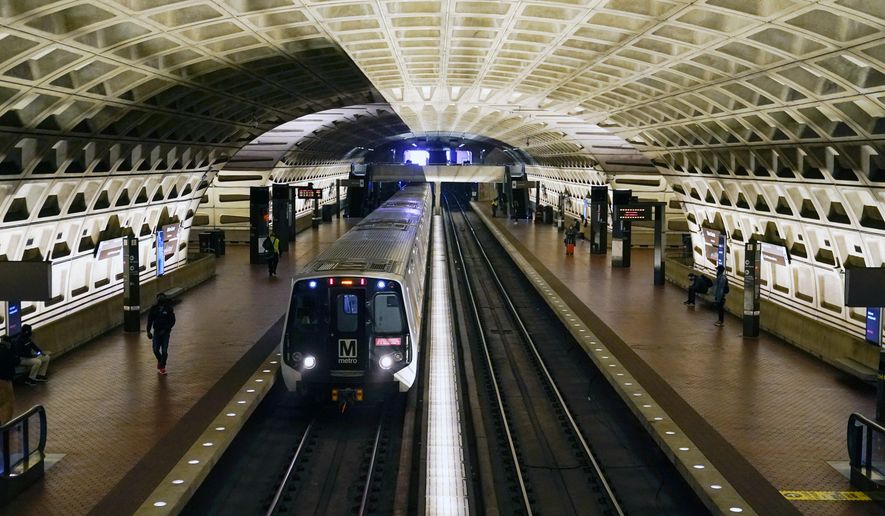The Washington-area’s Metro system said Tuesday that a safety commission has accepted its plan to phase back into service the 7000-series railcars, which make up most of the fleet and were taken off the tracks following a derailment in October.
The Washington Metrorail Safety Commission (WMSC) told Metro that it has “no technical objections” to its final plan submitted to return half of the railcars to passenger service, according to the transit agency.
That means Metro can return 336 rail cars or about 42 more eight-car trains to the tracks.
“From now until after the first of the year, customers may see some 7000-series railcars transition safely back to service,” Metro General Manager Paul J. Wiedefeld said.
“This is part of the process that will enable Metro to announce a more definitive service plan after the first of the year. Until that time, the transition of the 7000-series railcars through the end of the year will allow us to improve reliability,” Mr. Wiedefeld said.
Metro said it will gradually return 7000-series trains to service after they undergo inspections.
The agency said it needs time to prepare the rail cars that have been sitting in storage and to train rail maintenance workers on new inspection protocols.
Trains will be inspected every seven days as required by the safety commission. The 7000-series fleet used to undergo inspections every 90 days.
Metro removed all of its 748 7000-series rail cars — about 60% of its fleet — from the tracks after a National Transportation Safety Board (NTSB) investigation found that faulty wheel assemblies caused a Blue Line train carrying 187 passengers to derail Oct. 12 near the Arlington Cemetery station.
The train’s wheels shifted too far apart on their axles, a recurring problem with the rail cars since 2017, the NTSB found.
In total, Metro discovered 20 axles to be out of alignment after inspecting all of its 7000-series rail cars, according to agency spokesperson Ian Jannetta.
The transit agency has been adding older railcars to help fill the gaps in service left by removing hundreds of 7000-series railcars after the derailment.
The Blue Line train had departed the Rosslyn station when a wheelset on the fourth car of the Metro train, car 7200, derailed, according to a preliminary report released by NTSB investigators this month.
The train traveled about 1,800 feet after the derailment before coming to a stop in the tunnel. The train had been traveling at about 33 mph at the time of the derailment.
According to NTSB’s report, the car derailed and then reconnected with the rails twice during that trip before the final derailment.
The NTSB at the start of the month issued a safety alert to rail transit agencies nationwide to check their fleets for a wheelset problem that caused the Metro Blue Line train derailment.
The board urged agencies to check wheelsets that do not meet gauge specifications and to take immediate action to remedy the issue, noting certain Metro rail cars shifted outward from their proper position on their axles.
“The Safety Alert identifies the issue of wheelset movement on transit railcars and commuter railroads as a serious problem that has the potential to create a catastrophic event,” said Robert Hall, director of the NTSB’s Office of Railroad, Pipeline and Hazardous Materials Investigations, in a statement.
“As we continue to conduct the investigation of this derailment, it is imperative that the safety issues identified are addressed immediately to protect the American public traveling daily on our transit system,” Mr. Hall said.
The NTSB said the wheelset problem is “not easily identifiable” with a routine visual inspection, adding other transit and commuter rail cars could have the flaw.
The board, therefore, urged transit agencies to follow federal guidelines to conduct inspections for misaligned wheels.
• Shen Wu Tan can be reached at stan@washingtontimes.com.




Please read our comment policy before commenting.